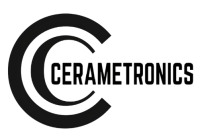Share

Information Retrieval with GPT Models and Vector Databases
Background
LlamaIndex recently released a feature for automatically splitting complex queries and querying the split data in Vector DB for optimized content retrieval.
Introduction to GPT Index and LlamaIndex
In today’s business environment, accurate information retrieval is the key to achieving marketing success. GPT Index and LlamaIndex, both based on GPT models, are designed for this purpose. They can quickly and accurately find relevant information. The demanding hardware requirements of GPT Index and LlamaIndex can help the electronics industry achieve growth targets.
Hardware Requirements
To use these information retrieval methods, you need sufficient computing resources to run large language models such as GPT-3. Specifically, you need high-performance processors such as GPU, CPU, or TPU. In addition, you need a large amount of memory and high-speed storage devices (such as SSD) to store and retrieve large amounts of data. These are hardware requirements that must be met in order to use GPT Index and LlamaIndex.
Importance of Vector Databases
Vector databases are also essential for GPT Index and LlamaIndex. They are databases designed specifically for storing and retrieving high-dimensional vector data. In GPT-based information retrieval methods, vector databases can store the vector representations generated by GPT models, allowing for fast and efficient information retrieval.
The Role of Vector Databases in GPT Index and LlamaIndex
In particular, vector databases play the following roles in GPT Index and LlamaIndex:
Store vector representations of context-sensitive queries generated by GPT models for faster comparison and matching during the search process.
Store vector representations of knowledge bases or documents for faster retrieval of relevant information during queries.
Optimize query performance by reducing distance calculations and index lookup time, improving the speed and accuracy of information retrieval.
In summary, GPT-based information retrieval methods such as GPT Index and LlamaIndex require powerful hardware resources to support the running of large language models and information retrieval tasks. Vector databases play an important role in these methods, storing and retrieving high-dimensional vector data to achieve fast and efficient information retrieval.
Key Features and Functional Requirements of Vector Databases
In practice, vector databases need to have certain specific features and functions to better support the information retrieval tasks of GPT Index and LlamaIndex. For example, vector databases need to support efficient vector insertion, querying, and deletion operations, as well as fast index construction and updates for large-scale datasets. At the same time, it also needs to provide high availability, scalability, and security to enable reliable information retrieval and management in large and complex business environments.
Choosing the Right Vector Database
Therefore, choosing a vector database that suits your business needs is crucial. Popular vector databases such as Milvus, Faiss, and Annoy can provide efficient and reliable vector storage and retrieval capabilities, as well as good scalability and flexibility to meet the needs of different business scenarios.
By investing in appropriate hardware and vector databases, enterprises can greatly improve the performance and efficiency of GPT-based information retrieval methods, thereby bringing more business value and competitive advantages to the company.
Key Factors for Evaluating Vector Databases
When choosing the right vector database, several factors need to be considered to ensure that it can meet the enterprise’s needs in GPT-based information retrieval tasks. An excellent vector database can not only improve the performance and efficiency of information retrieval but also bring more business opportunities and competitive advantages to the enterprise.
Performance: The vector database should have efficient vector storage, retrieval, and operation capabilities to meet the needs of real-time information retrieval.
Scalability: As data volume and query workload increase, the vector database should be able to easily scale its storage and computing capabilities.
Compatibility: The vector database should be compatible with common hardware devices and software platforms, allowing for seamless integration into existing technology architectures.
Ease of use: The vector database should provide a concise API and rich documentation to enable developers to quickly learn and use it.
Security: The vector database should provide data encryption and access control mechanisms to protect sensitive data and ensure data security.
Cost-effectiveness: When choosing a vector database, the relationship between its performance and functionality and investment costs needs to be weighed to ensure that it maintains cost-effectiveness while meeting business needs.
Community support and updates: Choosing a vector database with an active community and ongoing updates can help solve potential problems and ensure that the database keeps pace with technological developments.
Choosing the right vector database, multiple factors need to be considered to ensure that it can meet the enterprise’s needs in GPT-based information retrieval tasks. An excellent vector database can improve the performance and efficiency of information retrieval, as well as bring more business opportunities and competitive advantages to the enterprise.
STAY IN THE LOOP

